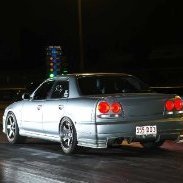Delete
Announcements
-
Similar Content
-
Latest Posts
-
By joshuaho96 · Posted
I don't really understand because clearly it's possible. The factory ECU is running on like a 4 MHz 16-bit processor. Modern GDI ECUs have like 200 MHz superscalar cores with floating point units too. The Haltech Nexus has two 240 MHz CPU cores. The Elite 2500 is a single 80 MHz core. Surely 20x the compute means adding some PID boost control logic isn't that complicated. I'm not saying clock speed is everything, but the requirements to add boost control to a port injection 6 cylinder ECU are really not that difficult. More I/O, more interrupt handlers, more working memory, etc isn't that crazy to figure out. SpaceX if anything shows just how far you can get arguably doing things the "wrong" way, ie x86 COTS running C++ on Linux. That is about as far away from the "correct" architecture as it gets for a real time system, but it works anyways. -
Holy hell! That is absolutely stunning! Great work!!!
-
It does when you start adding everything else in. But it's not just compute. It's the logic. Getting your timing right (I'm not meaning ignition timing for the engine). Making sure of your memory mappings, seeing your interrupts. Microcontroller devices only have so much capacity. For the most part, you want all those timers and interrupts in use on your engine control, which means you're left with less than ideal methods for timing and management of other control functions. Let's put it this way, my job is all about building custom hardware, that goes into cars, and integrates with them. We're also waiting on a media confirmation from SpaceX too fora world first we've just completed with them in NZ too. It's not just the little toys I play with. But you know, you can think and believe what you want.
-
By Dose Pipe Sutututu · Posted
I don't think it's a good buy, the trend looks bad lol.
-







Recommended Posts
Create an account or sign in to comment
You need to be a member in order to leave a comment
Create an account
Sign up for a new account in our community. It's easy!
Register a new accountSign in
Already have an account? Sign in here.
Sign In Now